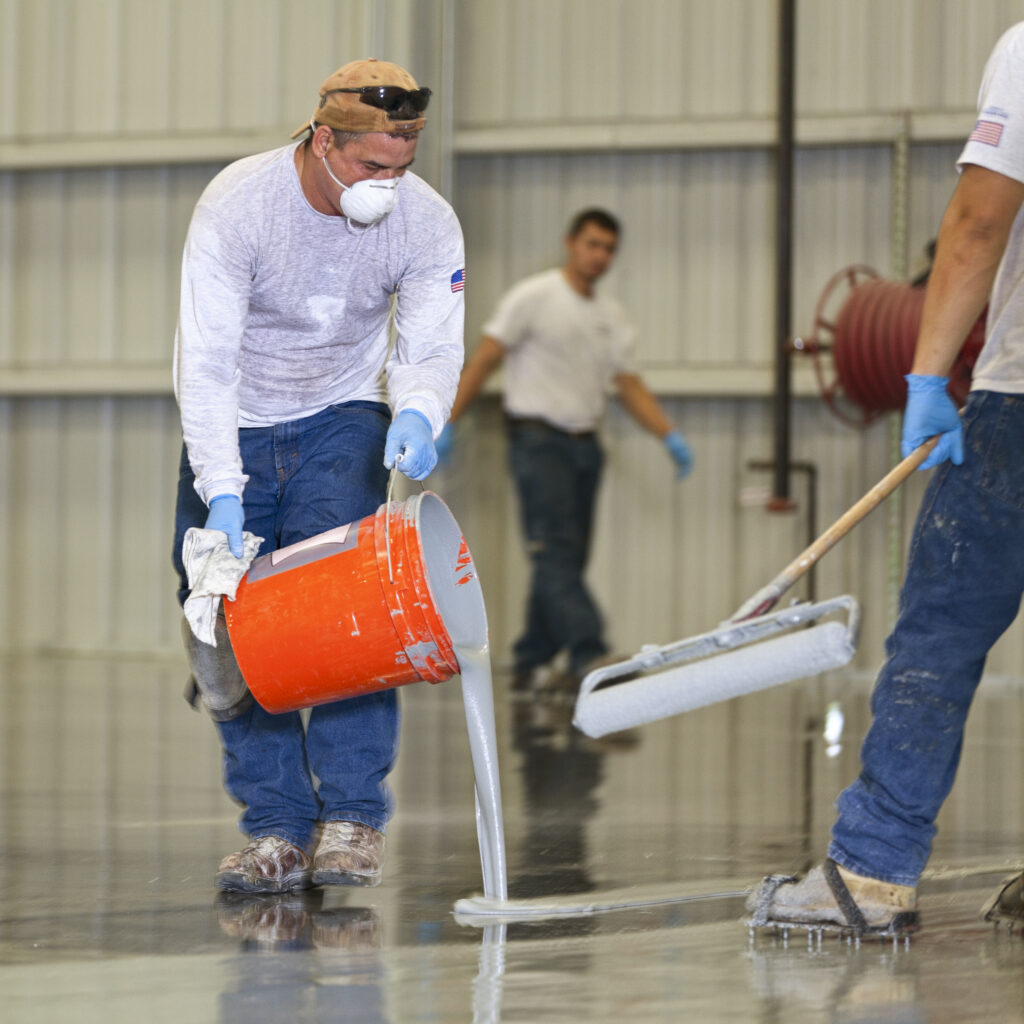Many people wonder if using epoxy resin indoors is a safe choice. While epoxy resin can be used inside your home with proper precautions, understanding the risks and safety measures is essential for protecting your health and maintaining good indoor air quality.
Understanding Epoxy Resin and Health Risks
Epoxy resin is a versatile material that transforms from liquid to solid when mixed with hardeners. It’s popular for crafts, DIY projects, jewelry making, tabletop coatings, and floor applications due to its durability and high-gloss finish.
Key Health Concerns
- Volatile Organic Compounds (VOCs) released during mixing and curing
- Potential respiratory irritation from fumes
- Skin sensitization from direct contact
- Highest risk occurs during the first 24-48 hours of the curing process
Choosing Safer Epoxy Products
When selecting epoxy for indoor use, prioritize products with these characteristics:
- Low-VOC formulations: Look for products with VOC levels below 50 grams per liter
- Water-based options: These generally emit fewer harmful vapors than solvent-based types
- Indoor-safe labeling: Products specifically designed for interior applications
- Non-flammable formulations: These typically have lower toxicity and reduce fire risk
Avoid products with strong, persistent odors or those that lack clear safety information. Industrial-grade epoxies marketed only for commercial use are generally not appropriate for home applications due to higher toxicity levels.
Essential Safety Precautions

Ventilation Requirements
Proper ventilation is the most critical safety factor when using epoxy indoors. The minimum standard requires opening all windows and doors in the work area and using at least one exhaust fan rated for the room size. Aim for cross-ventilation with air movement of 4-6 air changes per hour.
For enhanced safety, consider these additional ventilation tools:
- Portable air scrubbers with activated carbon filters
- Window-mounted exhaust fans
- Industrial fans positioned to blow fumes away from your breathing zone
Personal Protection
Always protect yourself with the right equipment during epoxy work. Wear nitrile gloves rather than latex, which can break down from resin contact. Use an N95 or P100 respirator mask during mixing and application, along with safety glasses and long sleeves to minimize skin exposure.
Choose your workspace carefully, selecting areas with maximum natural ventilation potential and hard surfaces for easy cleanup. Work away from bedrooms and living areas where people spend extended time.
Safe Application Practices
Before beginning any project, read and follow all manufacturer instructions completely and test your ventilation setup. Remove pets and children from the area and have emergency contacts readily available.
During application, follow these time management guidelines:
- Work in 30-minute intervals maximum
- Take 15-minute breaks in fresh air between sessions
- Complete larger projects over multiple days rather than extended sessions
- Stop immediately if you experience any symptoms
Monitor your environment continuously during work. Check that fumes are being effectively removed and ensure cross-ventilation is maintained throughout the process.
After application, maintain safety protocols during the curing period. Keep the area well-ventilated for 48-72 hours minimum and restrict access during the initial 24-hour period when fume production is highest. Continue ventilation until no odor is detectable and wait for complete cure before regular use, which typically takes about seven days.

Emergency Procedures
If you experience symptoms, take immediate action by moving to fresh air and removing any contaminated clothing. Wash affected skin thoroughly with soap and water. Seek medical attention for persistent symptoms and don’t hesitate to contact poison control if you suspect significant exposure.
Watch for these warning signs:
- Headaches or dizziness
- Difficulty breathing or chest tightness
- Eye or throat irritation
- Skin redness or burning
Storage and Disposal
Store epoxy components safely by keeping them in their original containers in cool, dry areas away from living spaces. Ensure containers are tightly sealed and check expiration dates regularly.
For disposal, never pour liquid resin down drains. Allow small amounts to cure completely before disposal and contact local hazardous waste facilities for larger quantities.
When to Avoid Indoor Use
Don’t use epoxy indoors if you have respiratory conditions like asthma, are pregnant or nursing, cannot achieve adequate ventilation, or are working in a basement or enclosed area without windows. In these situations, consider setting up a temporary outdoor workspace, using a well-ventilated garage with doors open, or hiring professionals for larger applications.
Conclusion
Epoxy resin can be used safely indoors when proper precautions are followed consistently, but “safe” doesn’t mean “without risk.” It means carefully managing risks through adequate ventilation, protective equipment, limited exposure time, and thoughtful product selection. Never compromise on safety measures, and remember that your health is worth more than any project. When in doubt, choose outdoor application or professional installation services.
For top-quality epoxy resin solutions that prioritize safety and performance, consider Optus Resin, who offers cutting-edge liquid resin systems designed for durability and versatility. With a commitment to research and innovation, Optus ensures its products meet the highest standards, providing solutions for decorative paving, anti-skid surfaces, industrial flooring, and more.
FAQs
Yes, you can use epoxy resin indoors, but it’s important to make sure the area is well-ventilated and consider using a nontoxic resin for safer indoor application.
Epoxy resin fumes can be harmful if inhaled without proper ventilation or respiratory protection, so always ensure good air flow when using it in household settings.
Non-toxic resins are available and are safer for indoor use because they produce fewer harmful vapors, reducing health concerns related to toxicity.
When applying epoxy indoors, open windows for better airflow, wear protective gear like masks for respiratory protection against fumes, and choose an epoxy with lower toxicity levels.
The strong odor from some types of epoxy resin can stay indoors unless you ensure adequate ventilation during its application and curing time to help clear out any residual smells.

